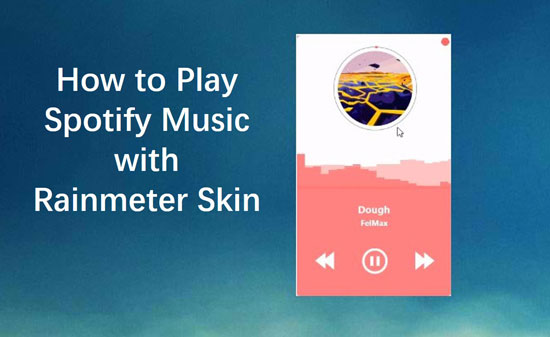

- #Virtual audio cable how to use on rainmeter driver
- #Virtual audio cable how to use on rainmeter full
- #Virtual audio cable how to use on rainmeter Pc
- #Virtual audio cable how to use on rainmeter windows
A comfortable mouse can significantly improve your experience. A good keyboard will increase your comfort, as well as make you a more productive typist. On top of the internal components listed above, you will also need these external components:

Optical Drive – device for handling optical disks.These plug into a slot on the motherboard and provide ports to connect a monitor to your computer. Some processors have an integrated GPU built in so you don’t need (but may add) a separate video card. GPU/ Graphics Card – does processing relating to video output.Optional components follow: (Components that depend on the function that will be given to the machine) OSes can be booted and use storage from inexpensive USB Drives, although this is only with extremely lightweight systems. The operating system, and all your programs and data are stored here, so if you choose SSD then the system will be faster. the things stored on it remain even when the computer is powered down. Quiet, very fast but not as cheap) – the "long-term memory" of the computer, used for persistent storage – i.e. Storage - either HDD (Hard disk drive - noisy and slower of the two but less expensive) and/or SSD (solid state drive.Data in RAM is lost when the computer is powered off, thus necessitating a storage drive. RAM – random access memory, the "short-term memory" of a computer, used by the CPU to store program instructions and data upon which it is currently operating.The CPU handles general and mathematically complicated tasks. CPU – central processing unit, the main processor of the computer.Motherboard/ mainboard – A board that facilitates communications between components and offers ports to connect them together.Power Supply Unit/ PSU – Power Supply Unit, converts outlet power, which is alternating current (AC), to direct current (DC) which is required by internal components, as well as providing appropriate voltages and currents for these internal components.Case - The case houses and protects rest of the parts, and contains additional functions like button, front IO ports, and other features.That way you won’t find yourself sitting down with a pile of brand new hardware only to find that you forgot an essential component. You might want to make a check list (perhaps using a spreadsheet) of parts to use as you go about your process of research and selection.
#Virtual audio cable how to use on rainmeter Pc
These are the parts that a standard PC will use. This guide will start with a quick explanation of essential parts and elaborate on them further on. The first step to building a computer is acquiring the parts. If this is a digital file, click on a link to go to that section.
#Virtual audio cable how to use on rainmeter windows
5.2.2 Installing Windows to dual-boot with GNU/Linux.4.5 Additional hardware and peripherals.3.9 What should affect the choice of any part/peripheral?.3.7 Can I use any of the parts from my old computer?.3.6 Do I plan on underclocking my computer?.3.5 Do I plan on overclocking my computer?.3.4.5 Entertainment system/media center.3.4 What will be the main function of the computer?.3.3.4 BSDs information and hardware support lists.3.3.3 Linux information and hardware support lists.3.3.2 Windows information and hardware support lists.3.3 What operating system am I going to use?.However we ought to make a proper tutorial on how virtual audio cable can be used to connect Wallpaper Engine's audio input solely to Spotify and others.
#Virtual audio cable how to use on rainmeter driver
It's a huge amount of work to cover some very specific situation and we'd likely have to develop driver software on kernel level which is something we would rather avoid doing for numerous reasons. What virtual audio cable or VoiceMeeter can do really makes them worth applications in their own right. Sorry, but implementing anything in this direction really goes out of scope for Wallpaper Engine right now.
#Virtual audio cable how to use on rainmeter full
Else, just implant a full scale audio delayer in the visualizer tool.

Now I have to use VoiceMeeter which is very CPU intensive. It would be very helpful if it can pull data from input side of Equalizer APO instead of the output so that the virtual audio routing will be much easier. Originally posted by leowzd:This is asking for a lot, but is it possible to implant Equalizer APO support as a part of the visualizer tool or as a plugin? I really want music visualization to work in sync with what I hear and I want resolution in the lower frequencies (50-200Hz).


 0 kommentar(er)
0 kommentar(er)
